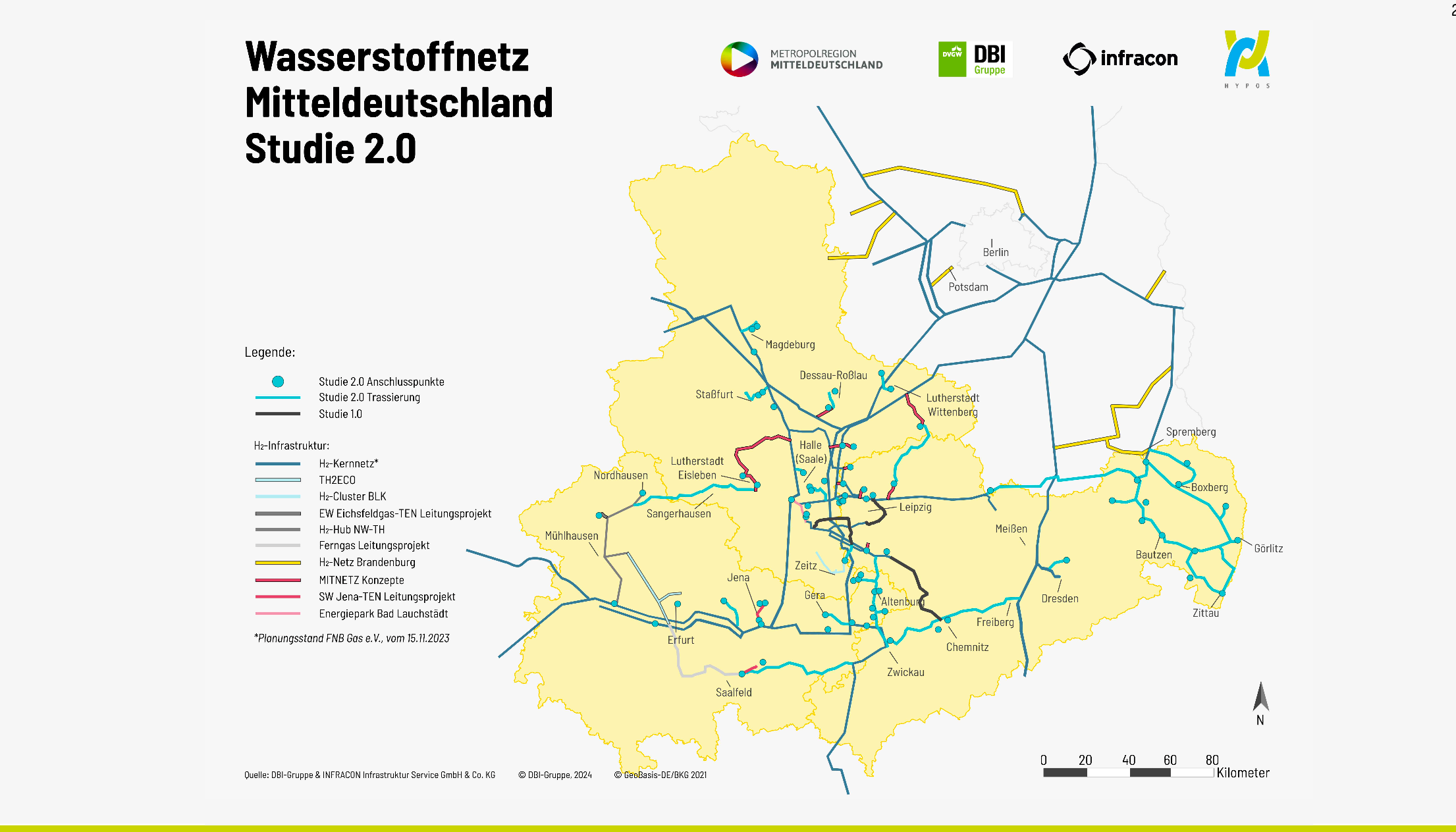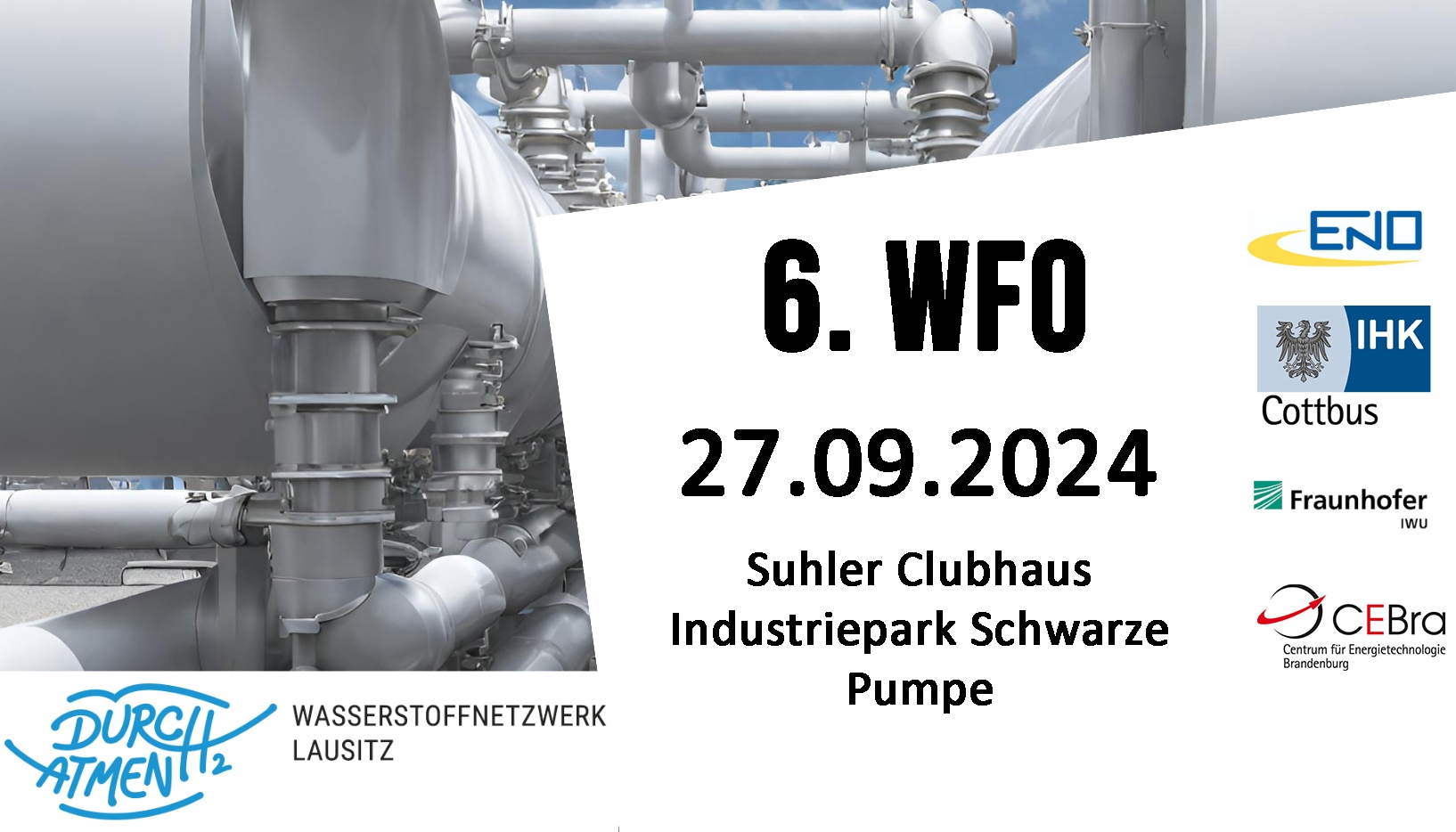structural development
H2 feasibility study 2.0 for Central Germany
- structural development
- Hits: 562

Central Germany is planning a 1,100 km long distribution network for green hydrogen - because the demand for green hydrogen and its generation capacities will increase rapidly in Central Germany by 2040. In order to connect producers and consumers of the climate-friendly energy source, an approximately 1,100 km long regional distribution network in Saxony, Saxony-Anhalt and Thuringia is necessary.
The study “ Hydrogen Network Central Germany 2.0 ”, carried out by the European Metropolitan Region of Central Germany and the hydrogen network HYPOS ENO is also , DBI and InfraconInfracon , shows that the region will have an electrolysis output of up to 3.7 gigawatts (GW) ) will achieve.

The planned hydrogen network will include 42 pipeline sections and will be implemented in several phases until 2045. Over half of the route (565 km) will be realized by converting existing natural gas pipelines, which will reduce the costs to around one billion euros - a saving of 41 percent compared to a completely new construction. This cost reduction as well as the parallel laying of new sections in existing route corridors also shorten the planning periods significantly.
“With the study, we have presented a detailed and realistic target network planning for the central German hydrogen distribution network,” explains Jörn-Heinrich Tobaben , Managing Director of the European Metropolitan Region of Central Germany. The study, financed by 54 private and public partners, shows the enormous potential and dynamic development of the hydrogen economy in Central Germany.
Dr. Joachim Wicke , CEO of HYPOS eV, emphasizes the need for large-scale infrastructure for future investments. “The electrolysis sites starting in 2027 along the first expansion stage of the national hydrogen core network in the region show that we need a line-based infrastructure in the near future.”
Gert Müller-Syring , Managing Director of DBI Gas- und Umwelttechnik GmbH , highlights the economic advantages: “The appropriate infrastructure can ensure the climate-friendly energy supply for regional companies and additional added value can be realized through the hydrogen industry.”
The study, which covers more than 30 districts and thus large parts of the federal states of Saxony, Saxony-Anhalt and Thuringia, is the largest privately financed study of its kind in Germany. Dr. Ulf Kreienbrock from INFRACON adds: “There is already great interest in expanding the study to sub-regions that have not yet been covered in a third edition.”
By combining regional producers and consumers, the Central Germany hydrogen network is intended to make an important contribution to the national hydrogen strategy and establish Central Germany as a pioneer in the hydrogen economy.
Would you like your company to not miss any developments in this groundbreaking technology?

Then remember it September 27, 2024, when we will hold the 6th Hydrogen Forum in the Suhl Clubhouse, Black Pump Industrial Park carry out together with our strong partners! If you have general questions about hydrogen in the Görlitz district or would like to report your expected needs, you can contact us at any time
We would also be pleased if you subscribe to our event newsletter here.
Cover photo: ENO project manager Per Wiesner explains the planned Central Germany 2.0 hydrogen network ( the UBL blog reported ), graphics: European metropolitan region of Central Germany
Thank you for rating this post.

